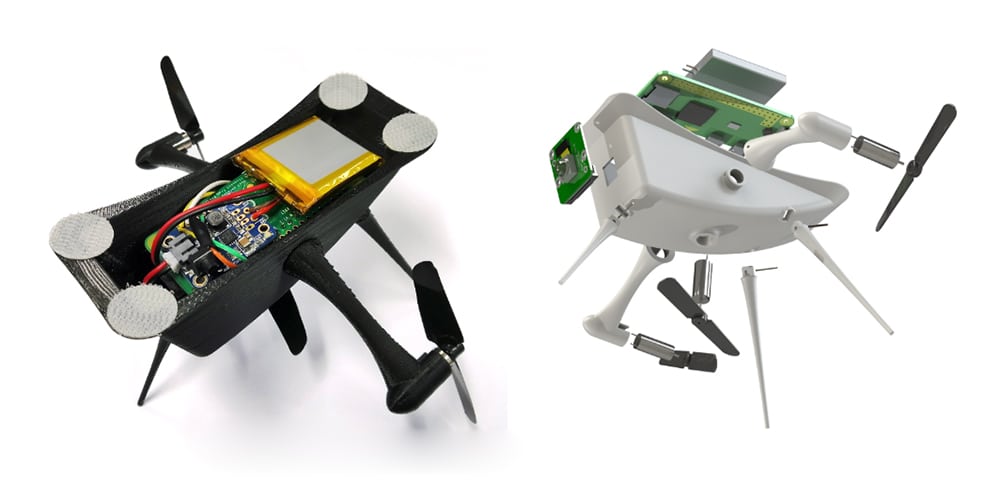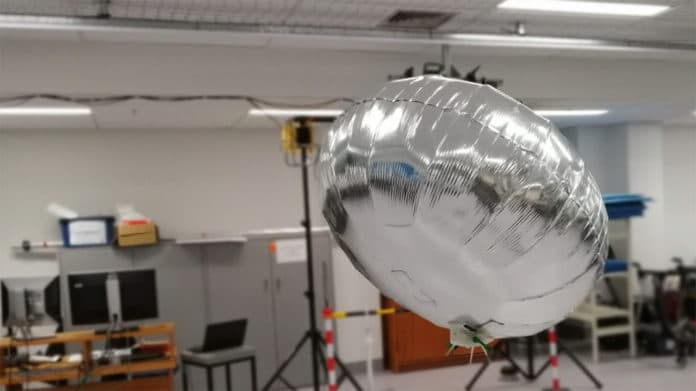To date, most unmanned aerial vehicles have a multicopter design. The popularity of this design is mainly due to the fact that it is quite simple in terms of mechanics as well as control when compared to aircraft-type drones. But they usually have very short flight duration, about 20-30 minutes. In addition, multicopters have to rotate the screws at high speed, which makes them noisy and dangerous, so using such devices indoors is not a good idea.
To address these problems, New Zealand engineers Gal Gorjup and Minas Liarokapis have developed a low-cost, miniature indoor robotic airship project, which is intended for indoor use and will be used for educational and research purposes. The engineers are part of the New Dexterity research group at the University of Auckland.

The indoor robotic airship uses the design of the balloon and Velcro-fastened 3D printed case. As it has neutral buoyancy, soft body and consumes energy only for maneuvers, it is not so dangerous for people.
Due to the low density and the lack of reactivity, Gorjup and Liarokapis chose helium as the lifting gas, and after evaluating five different balls, they chose a 91-cm ball with a foil surface. This open-air balloon is able to lift a weight of 80 grams, and thanks to the metalized surface, helium is stored in it for the longest time among the considered balls.
The gondola, which is located under the microfoil cover, was printed in 3D and fastened with Velcro strips. The 3D-printed case contains a Raspberry Pi Zero W, the motor drivers, a set of DC motors, a voltage regulator, and three propellers and a camera module. The propellers are powered by a single lithium-ion battery with a capacity of 500 mAh. A camera provides a dynamic viewing angle.

Rotor speeds can either be controlled by onboard logic or manually via a wireless connection through SSH or an appropriately developed Robot Operating System (ROS) package. The gondola legs and rotor brackets are detachable for ease of maintenance, repair, and modification. Engineers made two attachment points on the balloon, one of which is located in the center, and the second is shifted to the edge.
Test flights showed that with an asymmetric arrangement of the nacelle, the device more stably maintains a longitudinal course during a flight. In addition, receiving data on its position from an external tracking system, the drone was able to fly relatively accurately along a circular path.
It was shown that robotic airship is suitable for education and research and is financially and ecologically sustainable. Students can use it to test their PID controllers and improve their CAD and rapid prototyping skills. The open-source nature of the physical design also allows for customization and optimization.
They published the scientific work on the open-source design and the construction of the airship with the title “A Low-Cost, Open-Source, Robotic Airship for Education and Research” in the IEEE Access Collection. And the documentation for self-assembly is posted on GitHub.
